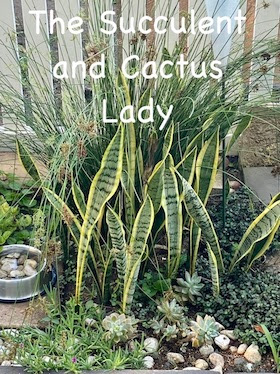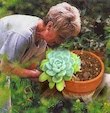It is only when we are aware of the earth
and of the earth as poetry that we truly live.
- Henry Beston, 1935, Herbs and the Earth
I’ve been absent from the world, lost in the beauty of my sunny front-yard garden. Too much work, a whole lot of plants, and life goes on. And the Echeverias (E. glauca) are flowering! A sure sign of mid-summer and lots of rain.
The Genus Echeveria is a member of the Crassulacae family and are natives of Latin America — specifically Argentina and Mexico. There are around 150 species and they are a wonderful succulent to have in your collection.
Echeveria glauca, my personal favourite, also called "Hen and Chicks", is one of the most popular. E. glauca is desirable for its blue-green colour, attractive arrangement of foliage, for their hardiness and their colourful, bell-shaped flowers on pink stems in early summer. Break them off when blooms have faded, this encourages more flowers.
They are one of the easiest succulents to grow indoors where a sunny window is a perfect spot for them. But be careful of too much direct sun through the glass as this can burn them. During summer and spring water them regularly, reducing watering in winter.
For me, growing them outdoors is a total struggle. E. glauca prefers average summer temps of 18ºC - 21ºC (65ºF - 70ºF). and in winter, cool to 10ºC (50ºF). In summer, the temperature here in Tarlton often exceeds 30ºC. And even though our winter temperatures rarely dip below 10ºC, we get a particularly bad frost that doesn't kill them but stunts their growth, making it harder for them to recover in summer. This little feature no longer exists as I had to lift them all and plant in pots.
They need a well-drained soil and our soil tends to compact quickly and become as hard as rock, even with lots of compost and sand added.
So slowly, as the years have passed, I've taken them out of the garden and put them in pots, baskets and anything else I can lay my hands on.
One can see the difference in the Echeverias that get brought in for the winter and those that stay outside.
Echeverias spread by making pups (babies), which can be harvested and re-planted but are easily propagated by taking a cutting (or by a leaf for the most of them). Besides propagation from leaves, if the main stem of the Echeveria becomes long and bare, you can cut the rosette off, let the wound dry for a week or so, and re-root the rosette. An expert recommends suspending the rosette just barely out of reach of a layer of growing mix. The rim of the pot can act as support. The rosette will send roots reaching down towards the mix. When you see a good amount of roots, it's ready to plant in the soil.
CULTIVATION TIPS
Most Echeveria are summer growers. Once established they can tolerate extended dry periods without watering but will grow stronger if they receive adequate water during their growing season. Free draining, porous soil is essential to prevent root rot. Echeveria are shallow rooted plants and therefore benefit from good levels of organic matter in the soil. Good ventilation is important for minimising pest and disease risks. Mealey bug and aphids find them irresistable so regular drenching with a suitable pesticide during the warmer months is advised - use Neem Oil which works well and is 100% organic. Generally, the more sun they get the better they will display their colours and shape, but protect them from excessive sun during hot weather.
All pics taken in my garden (Tarlton, Gauteng, South Africa).
And here are some lovely ideas I found on the internet for displaying your Echeverias and other succulents :
::




























